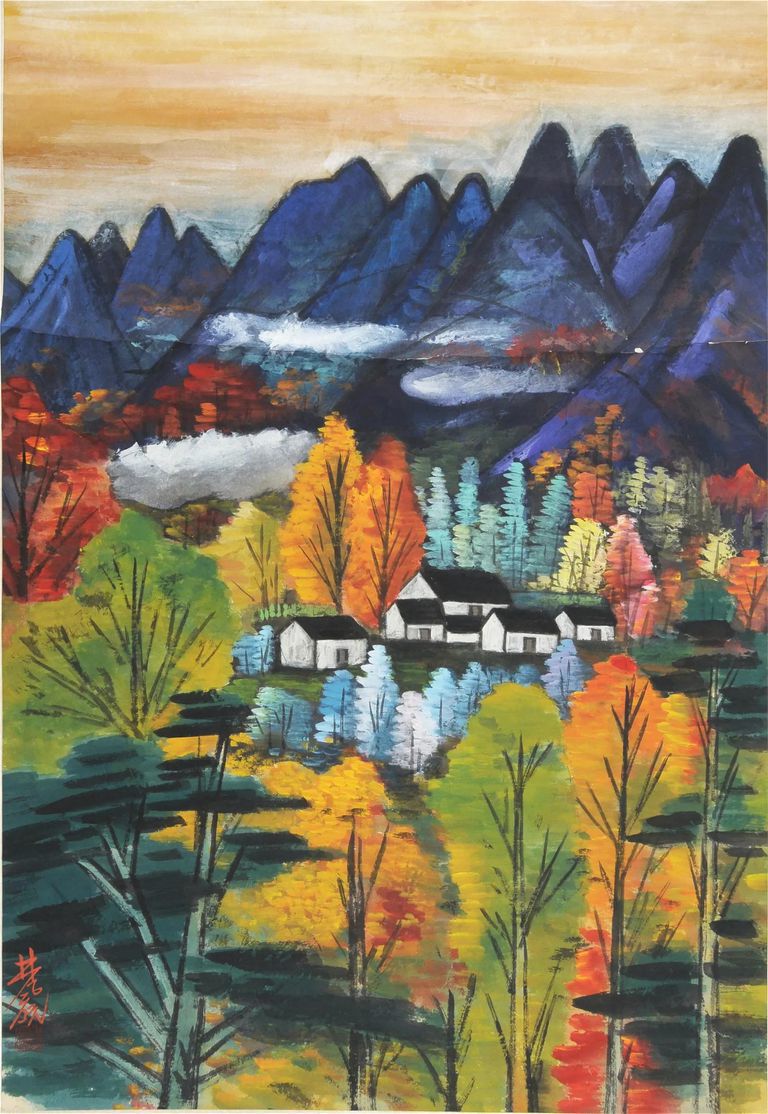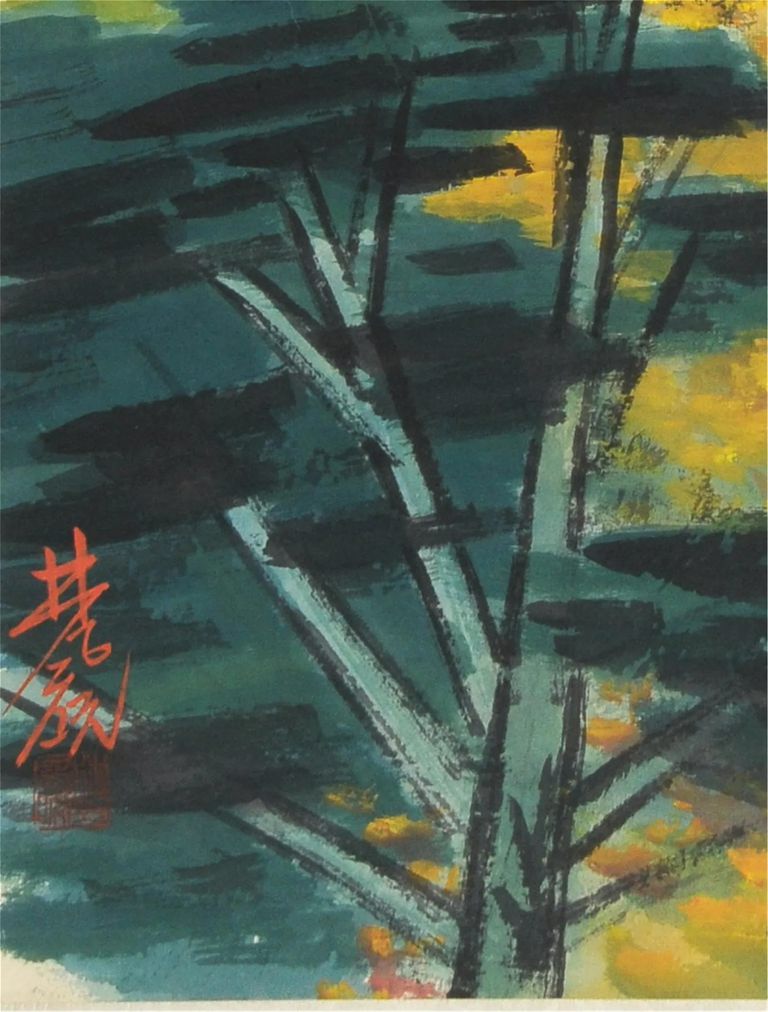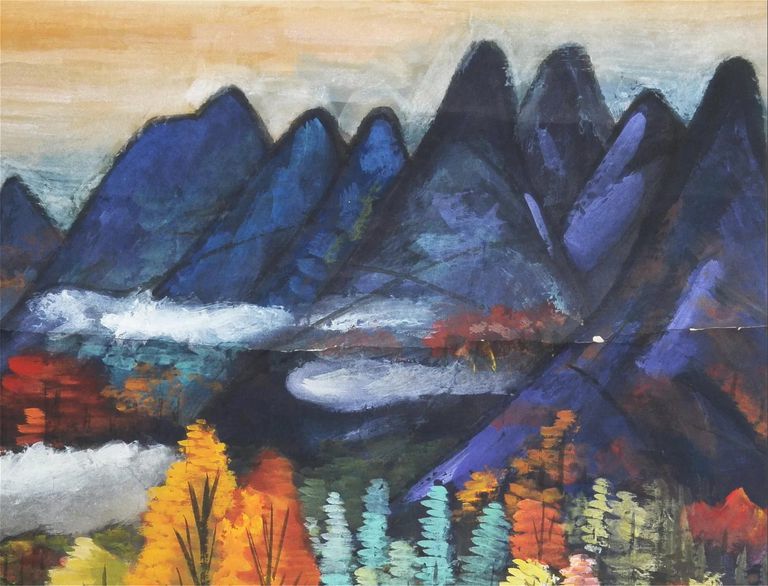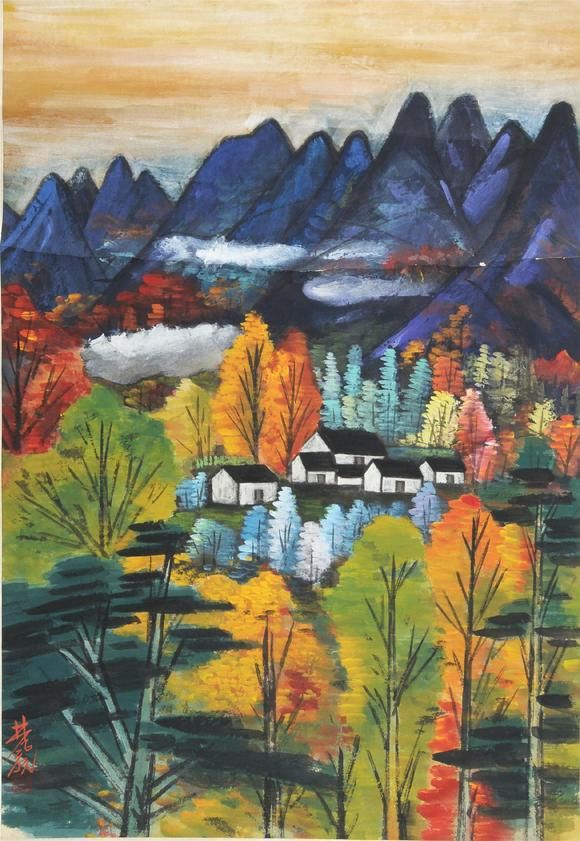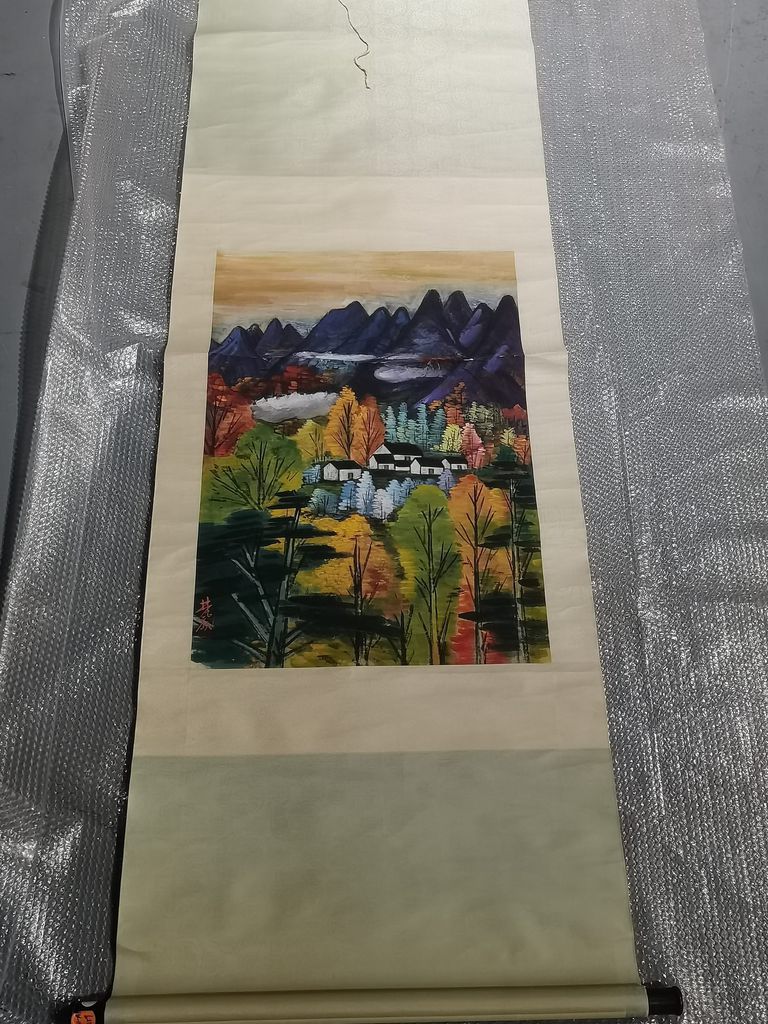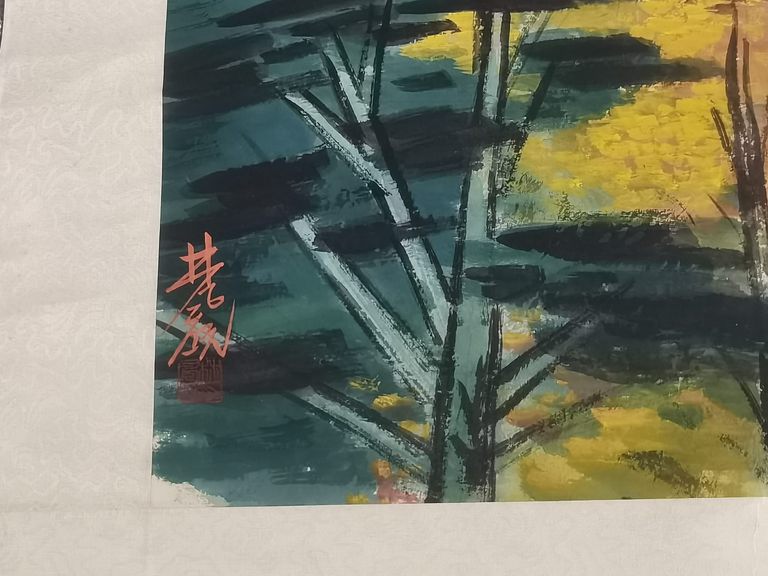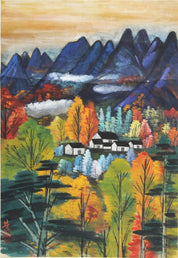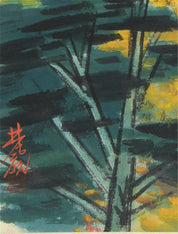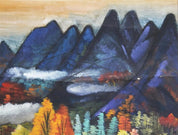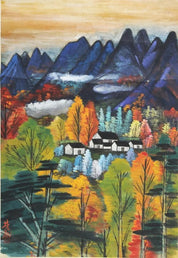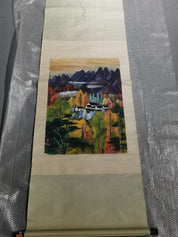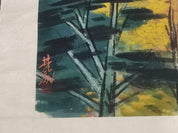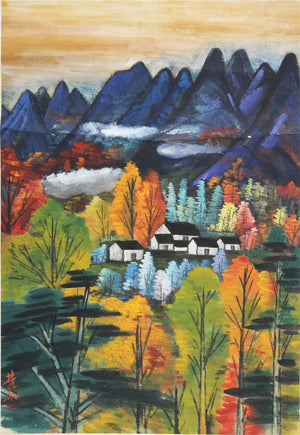Similar Items
Lin Fengmian, Landscape
Lin Fengmian
Artwork Details
Artist:
Lin Fengmian
Origin:
China
Dimensions:
82 x 55 cm
Artwork Description
"Landscape" by Lin FengmianIn 'Landscape' by Lin Fengmian, viewers are presented with an aerial perspective of an enchanting autumn scene. The composition offers a harmonious blend of vibrant colors and careful detailing, creating a picturesque tableau that captures the essence of the changing seasons. Through meticulous brushwork and a masterful handling of color, Lin Fengmian transports the audience to a serene landscape that resonates with both familiarity and artistic interpretation.
Details:
Artist: Lin Fengmian
Title: "Landscape"
Medium: Chinese scroll painting
Dimensions: Sight 82 x 55 cm
Signature: Lower left corner
Condition Report: A horizontal crease across the surface of the painting in the upper part; otherwise in good condition.
Description:
'Landscape' by Lin Fengmian unfolds an autumnal vista from an elevated vantage point. The painting's composition immediately draws the eye to a cluster of white houses nestled amidst the resplendent hues of fall foliage. The brilliant oranges, reds, yellows, and greens of the leaves reflect the vibrant energy of the season, while the contrast with the pale houses enhances their visual prominence. Lin Fengmian's painterly technique captures the essence of each element, infusing the scene with a sense of organic vitality.
The distant mountain peaks painted in cool hues contribute to the painting's spatial depth and perspective, suggesting the expanse of the landscape. This deliberate contrast in color temperature reinforces the atmospheric conditions, emphasizing the warm and cool interplay between foreground and background. The vertical composition's design allows each component ample space, providing a panoramic view of the natural world.
Lin Fengmian's deft use of color and brushwork evoke the splendor of autumn, a season characterized by transition and transformation. The artist's deliberate attention to detail, from the intricate rendering of individual leaves to the delicate brushstrokes that define the architecture, demonstrates a keen understanding of both natural forms and artistic expression.
About the Artist:
Lin Fengmian is a modern painter and art educator. Originally named Lin Fengming, born in Meixian, Guangdong, he loved painting since childhood, and went to France for a work-study program at the age of 19. He first studied Western painting at the Dijie School of Fine Arts, and then transferred to the Paris National School of Fine Arts for further studies. After returning to China in 1925, he served as the principal and professor of Beiping Art Academy. In 1927, Lin Fengmian was invited by Cai Yuanpei to Hangzhou to establish the National Academy of Art (later Zhejiang Academy of Fine Arts) as the principal. After liberation, he served as a painter at the Shanghai Academy of Chinese Painting. Lin Fengmian settled in Hong Kong in the 1970s, and held a solo exhibition in Paris in 1979, which was a great success.
Lin Fengmian is good at describing ladies' figures, Peking Opera characters, fishing village style and female body, as well as all kinds of still lifes and landscapes with houses. Judging from the content of the works, there is a style of sadness, loneliness, emptiness and lyricism; from the perspective of form, one is a square composition, and the other is untitled. His paintings have distinctive features, and the viewer can recognize them at a glance. He tried hard to break the boundary between Chinese and Western art and create a common artistic language. He is worthy of being an innovative master of art, and has exerted a profound influence on many younger painters. Lin Fengmian is the spiritual leader of the Chinese art circle throughout the 20th century.
Lin Fengmian (1900-1991) was a Chinese painter who is known for his contributions to the development of modern Chinese art. He was born in Guangzhou, China and received his early art training in Shanghai, where he studied traditional Chinese painting techniques.
In 1919, Lin traveled to Europe to continue his art education and studied at the École Nationale Supérieure des Beaux-Arts in Paris. While in Paris, he was exposed to European modernism and developed a style that combined elements of traditional Chinese art with modernist techniques.
After returning to China in the 1920s, Lin became a leading figure in the modern Chinese art movement. He founded the National Academy of Art in Hangzhou and served as its first principal. Lin's work was characterized by his use of bold colors and dynamic brushwork, and he often depicted historical or mythological subjects in his paintings.
During the Cultural Revolution in China in the 1960s and 1970s, Lin was persecuted for his association with Western art and was forced to destroy many of his own paintings. However, he continued to paint in secret and his work has since been rediscovered and celebrated for its unique blend of Eastern and Western artistic traditions.
Today, Lin Fengmian is recognized as one of the most influential figures in the development of modern Chinese art, and his work is held in numerous public and private collections around the world.

